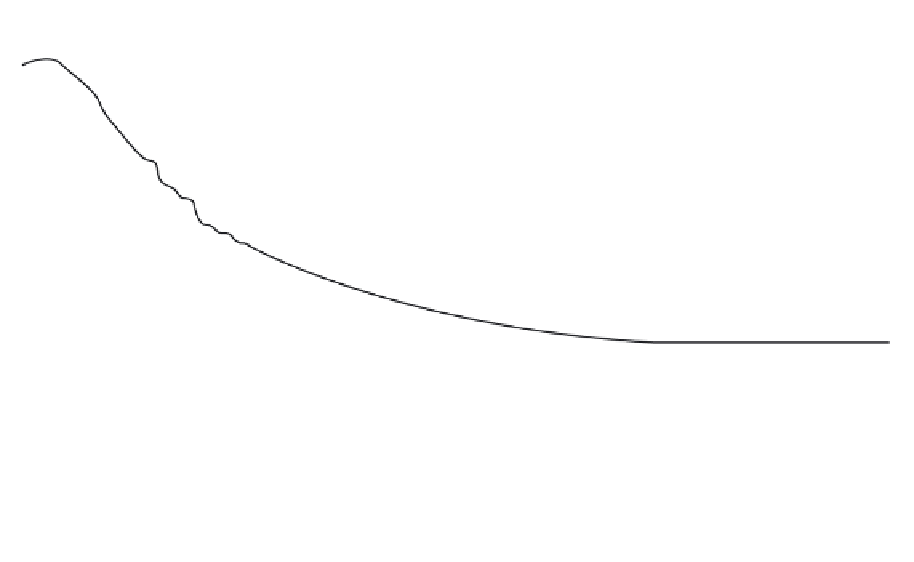Geoscience Reference
In-Depth Information
Mountain/
torrent phase
Shingle phase
Silt phase
Tidal phase
Production zone
Transfer zone
Deposition zone
Hillslope
system
Fluvial system
Fig. 2.6
Schematic diagram showing transitions in the fluvial system along a river profile. (Source: Mosley & Schumm 2001;
reproduced with permission
New Zealand Hydrological Society
.)
to the coastal lowlands was developed by Nevin
in 1965 (Mosley & Schumm 2001; Fig. 2.6).
This shows the transition from the headwater
catchments, which are dominated by steep
channels such as cascades, step-pool systems
and coarse braided rivers, through to meander-
ing lowland channels. Generally the sediment
load in the headwater channels is dominated
by coarse bedload (50 -90% of the total load),
whereas downstream fine suspended load dom-
inates (often exceeding 80 -90% of the total
annual load) (Fig. 2.6). It is well known that
in the absence of significant tributaries grain-
size systematically decreases downstream. Bed
material size at any point in the drainage basin is
a function of sediment supply and the combined
action of sediment sorting and abrasion. This
is often expressed as an exponential decline in
grain size with distance downstream:
a coefficient representing the combined action
of sorting and abrasion. Such simple patterns
do not hold for all rivers especially where there
are variations in different sediment source rock
types or where tributary inputs of sediment
become significant (Rice & Church 1998).
2.2.2 Sediment yields from different mountain
environments
The geomorphological activity in a particular
mountain environment can be estimated by meas-
uring the sediment yield from the catchments
draining such areas. There have been several
attempts to interpret global patterns of fluvial
sediment yield (net erosion) in terms of the factors
controlling sediment delivery (Walling & Webb
1983; Jansson 1988; Milliman & Syvitski 1992;
Summerfield & Hulton 1994). The main factors
considered have been either climate and runoff,
or relief and tectonics. Clearly both are closely
related (see Fig. 2.2) and the sediment discharge
from a particular drainage basin is dependent
on the combination of these controls. A study by
D
=
D
o
e
−
aL
where
D
is the particle size,
D
o
is the initial
particle size,
L
is distance downstream and
a
is























